#prince james francis edward stuart
Explore tagged Tumblr posts
Text

The Solemnisation of the Marriage of James III and Maria Clementina Sobieska
Artist: Agostino Masucci (Italian, 1691-1758)
Date: 1735
Medium: Oil on Canvas
Collection: National Galleries Scotland, Edinburg
Description
The Polish princess Maria Clementina Sobieska was chosen to be the bride of Prince James Francis Edward Stuart, the 'Old Pretender', who lived in gloomy exile in Rome. Jacobites everywhere rejoiced at the birth of their son, Charles, in 1720, but Clementina had a fierce temper and soon she and her much older husband were quarrelling constantly. Within months of the birth of their second child, Henry, she left James and took refuge in a convent.
#portrait#solemnisation#marriage ceremony#painting#oil on canvas#james III#maria cementina sobieska#polish nobility#prince james francis edward stuart#house of stewart#european nobility#agostino masucci#italian painter#18th century painting#indoors#candlesticks#candles#wigs#costume#books#drapes#ceiling frescoes#polish history
2 notes
·
View notes
Text

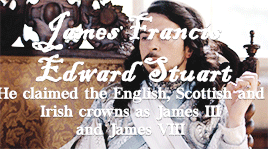


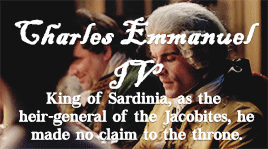
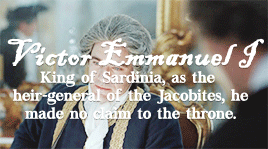


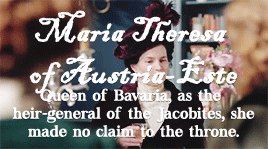

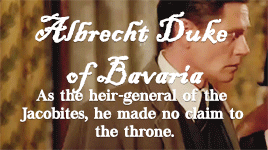

jacobite pretenders/heir-generals of the jacobites
#historyedit#weloveperioddrama#history#perioddramaedit#james ii#james ii and vii#james francis edward stuart#bonnie prince charlie#henry benedict stuart#maria theresa of savoy#charles emmanuel iv#victor emmanuel i#maria theresa of austria este#rupprecht crown prince of bavaria#my gifs#my gifsets
74 notes
·
View notes
Text
Stuart Memes Brought By Yours Truly:










#stuart memes#why did i make these#stuartposting#stuarts#james ii#william iii#mary ii#william of orange#anne queen of great britain#prince george of denmark#george of denmark#william and mary#anne and george#the first churchills#the first churchills 1969#anne hyde#james francis edward stuart#maria beatrice d'este#mary of modena#17th century#history#history humour#we have a pretty witty queue#charles ii#boom
14 notes
·
View notes
Text




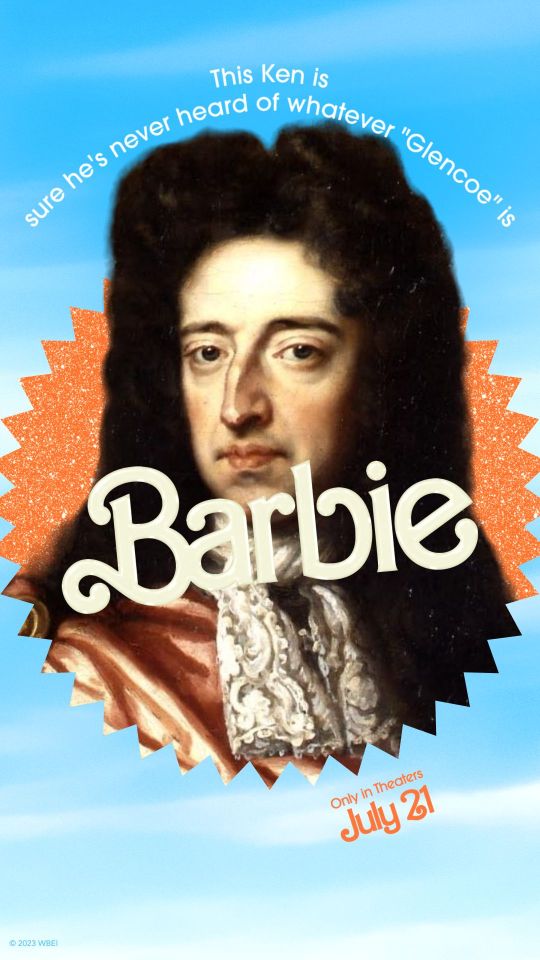
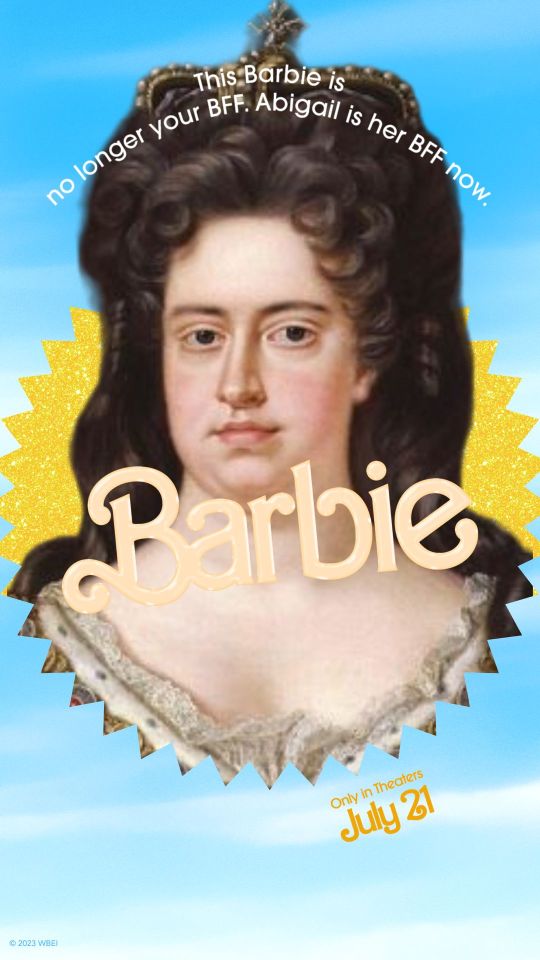
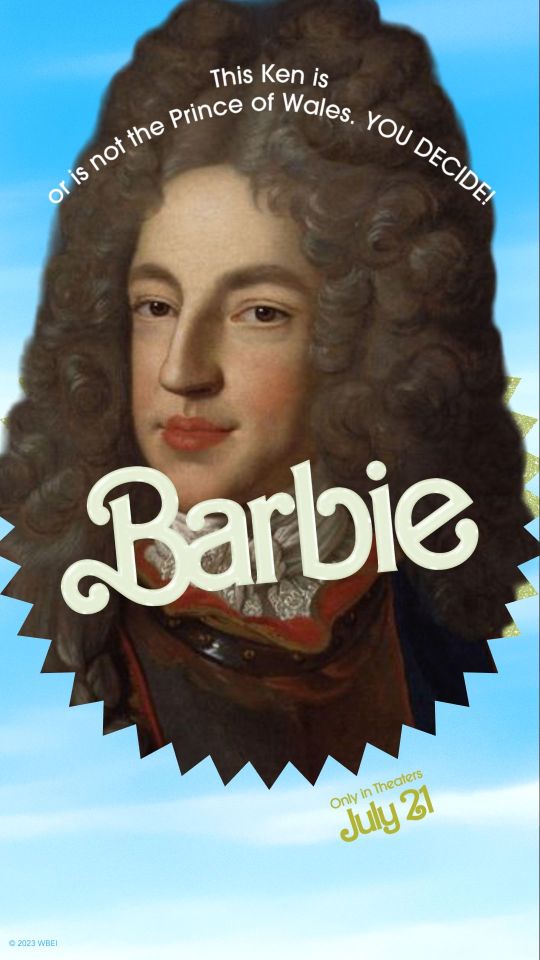

Am I doing this right?
#the stuarts#charles i#charles ii#james ii#mary ii#william ii#william of orange#queen anne#james francis edward stuart#charles edward stuart#bonnie prince charlie#history humour#british history#17th century#18th century#barbie meme
144 notes
·
View notes
Text

James Francis Edward, Prince of Wales (1688-1766). Possibly by Pierre Mignard..
#museo del prado#house of stuart#prince of wales#james francis edward stuart#house of stewart#Tywysog Cymru#uk#pierre mignard
7 notes
·
View notes
Text
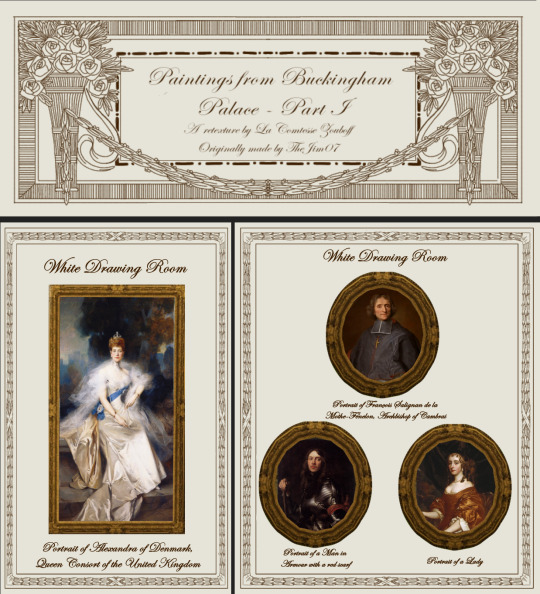
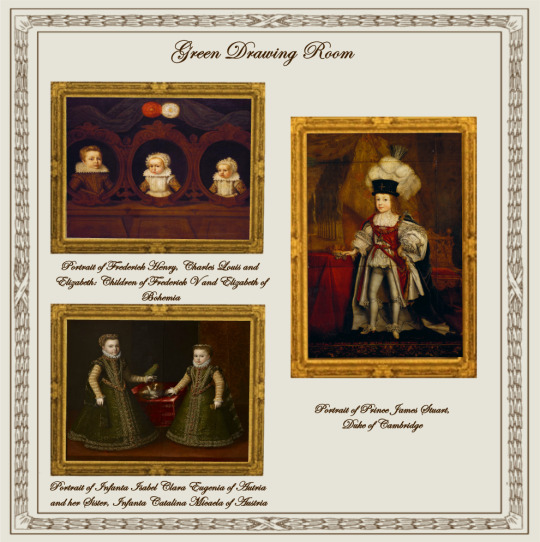
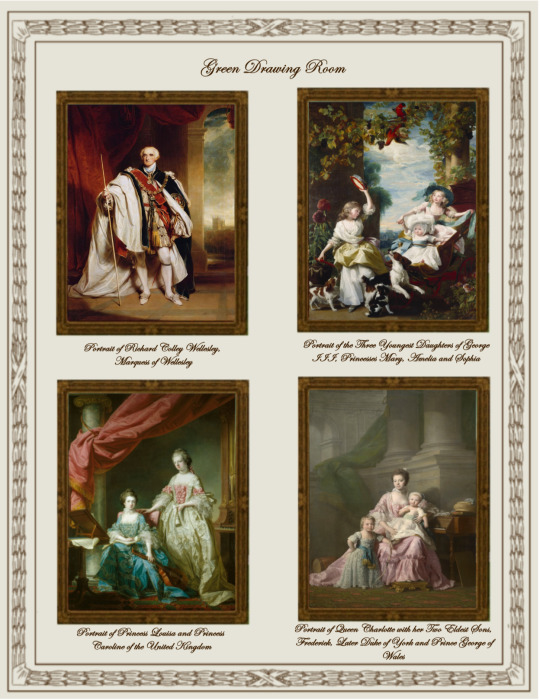
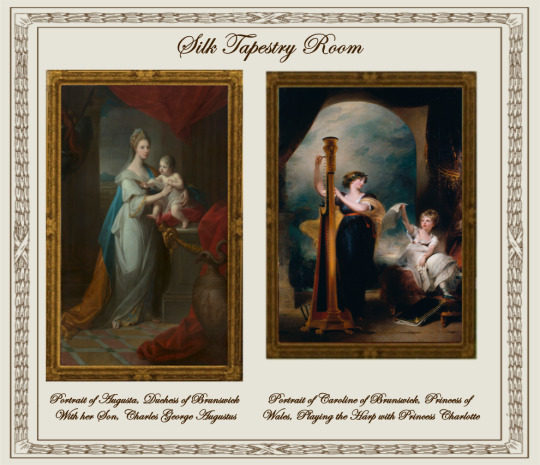

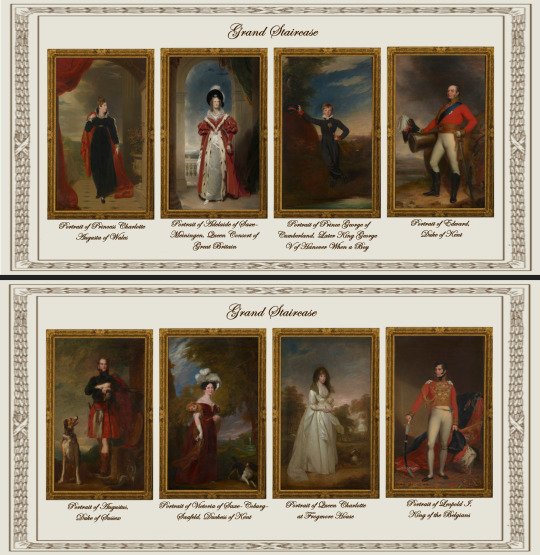
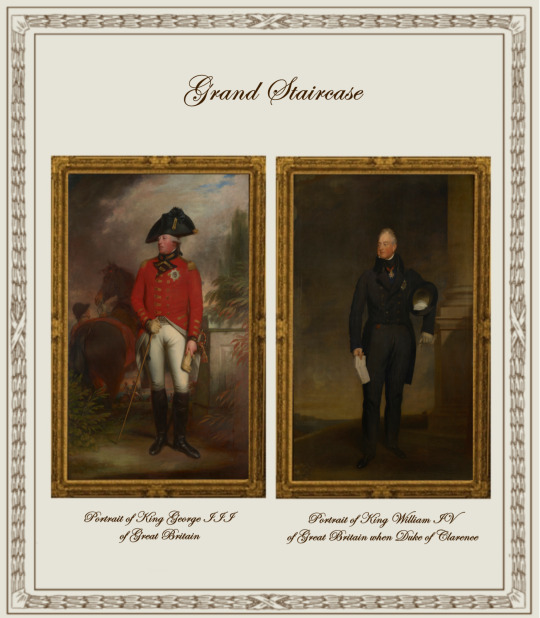
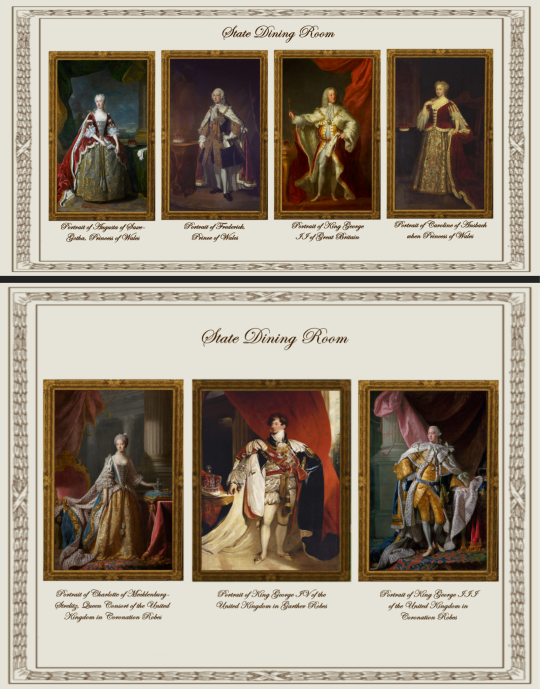
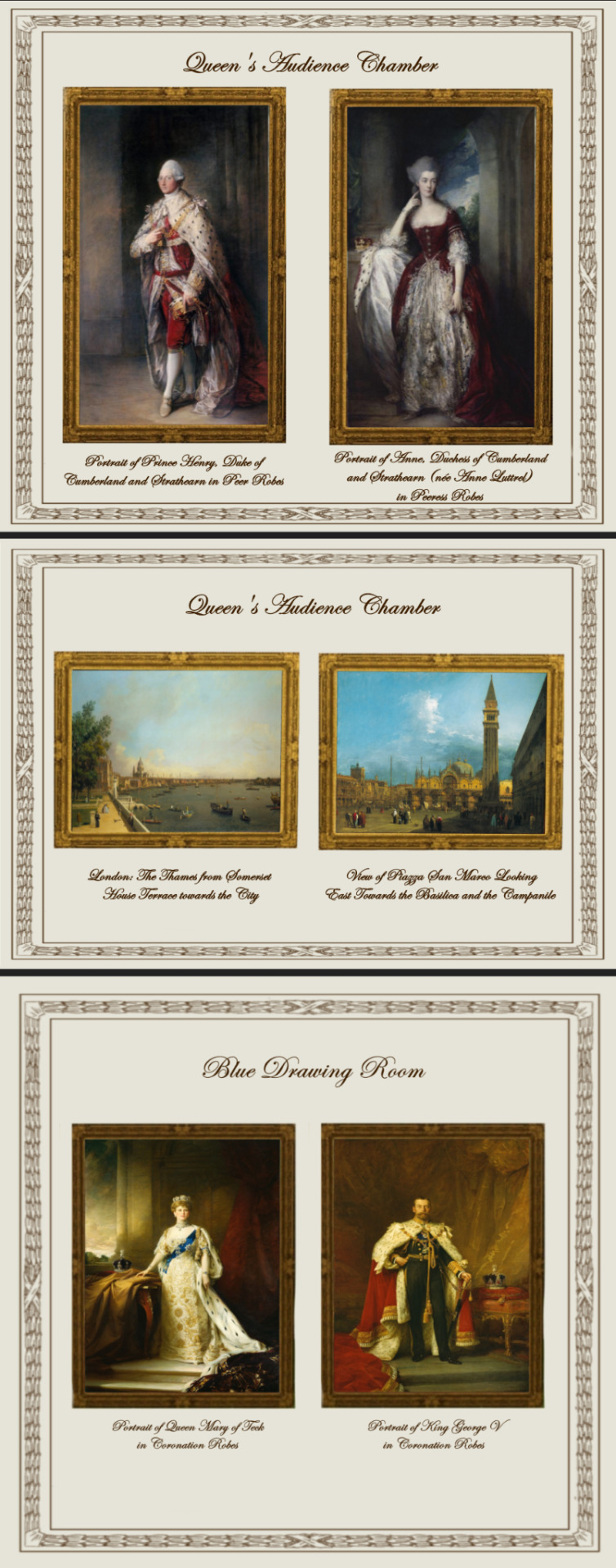
Paintings from Buckingham Palace: part I
A retexture by La Comtesse Zouboff — Original Mesh by @thejim07
100 followers gift!
First of all, I would like to thank you all for this amazing year! It's been a pleasure meeting you all and I'm beyond thankful for your support.
Spread among 13 occupied and historic royal residences in the United Kingdom, the collection is owned by King Charles III and overseen by the Royal Collection Trust. The British monarch owns some of the collection in right of the Crown and some as a private individual. It is made up of over one million objects, including 7,000 paintings, over 150,000 works on paper, this including 30,000 watercolours and drawings, and about 450,000 photographs, as well as around 700,000 works of art, including tapestries, furniture, ceramics, textiles, carriages, weapons, armour, jewellery, clocks, musical instruments, tableware, plants, manuscripts, books, and sculptures.
Some of the buildings which house the collection, such as Hampton Court Palace, are open to the public and not lived in by the Royal Family, whilst others, such as Windsor Castle, Kensington Palace and the most remarkable of them, Buckingham Palace are both residences and open to the public.
About 3,000 objects are on loan to museums throughout the world, and many others are lent on a temporary basis to exhibitions.
-------------------------------------------------------
This first part includes the paintings displayed in the White Drawing Room, the Green Drawing Room, the Silk Tapestry Room, the Guard Chamber, the Grand Staircase, the State Dining Room, the Queen's Audience Room and the Blue Drawing Room,
This set contains 37 paintings and tapestries with the original frame swatches, fully recolourable. They are:
White Drawing Room (WDR):
Portrait of François Salignan de la Mothe-Fénelon, Archbishop of Cambrai (Joseph Vivien)
Portrait of a Lady (Sir Peter Lely)
Portrait of a Man in Armour with a red scarf (Anthony van Dyck)
Portrait of Alexandra of Denmark, Queen Consort of the United Kingdom and Empress of India (François Flameng)
Green Drawing Room (GDR):
Portrait of Prince James Stuart, Duke of Cambridge (John Michael Wright)
Portrait of Frederick Henry, Charles Louis and Elizabeth: Children of Frederick V and Elizabeth of Bohemia (unknown)
Portrait of Infanta Isabel Clara Eugenia of Autria and her Sister, Infanta Catalina Micaela of Austria (Alonso Sanchez Coello)
Portrait of Princess Louisa and Princess Caroline of the United Kingdom (Francis Cotes)
Portrait of Queen Charlotte with her Two Eldest Sons, Frederick, Later Duke of York and Prince George of Wales (Allan Ramsay)
Portrait of Richard Colley Wellesley, Marquess of Wellesley (Martin Archer Shee)
Portrait of the Three Youngest Daughters of George III, Princesses Mary, Amelia and Sophia (John Singleton Copley)
Silk Tapestry Room (STR):
Portrait of Caroline of Brunswick, Princess of Wales, Playing the Harp with Princess Charlotte (Sir Thomas Lawrence)
Portrait of Augusta, Duchess of Brunswick With her Son, Charles George Augustus (Angelica Kauffmann)
Guard Chamber (GC):
Les Portières des Dieux: Bacchus (Manufacture Royale des Gobelins)
Les Portières des Dieux: Venus (Manufacture Royale des Gobelins)
Les Portières des Dieux (Manufacture Royale des Gobelins)
Grand Staircarse (GS):
Portrait of Adelaide of Saxe-Meiningen, Queen Consort of Great Britain (Martin Archer Shee)
Portrait of Augustus, Duke of Sussex (Sir David Wilkie)
Portrait of Edward, Duke of Kent (George Dawe)
Portrait of King George III of Great Britain (Sir William Beechey)
Portrait of King William IV of Great Britain when Duke of Clarence (Sir Thomas Lawrence)
Portrait of Leopold I, King of the Belgians (William Corden the Younger)
Portrait of Prince George of Cumberland, Later King George V of Hanover When a Boy (Sir Thomas Lawrence)
Portrait of Princess Charlotte Augusta of Wales (George Dawe)
Portrait of Queen Charlotte at Frogmore House (Sir William Beechey)
Portrait of Victoria of Saxe-Coburg-Saafeld, Duchess of Kent (Sir George Hayter)
State Dining Room (SDR):
Portrait of Charlotte of Mecklenburg-Strelitz, Queen Consort of the United Kingdom in Coronation Robes (Allan Ramsay)
Portrait of King George III of the United Kingdom in Coronation Robes (Allan Ramsay)
Portrait of Augusta of Saxe-Gotha, Princess of Wales (Jean-Baptiste Van Loo)
Portrait of Caroline of Ansbach when Princess of Wales (Sir Godfrey Kneller)
Portrait of Frederick, Princes of Wales (Jean-Baptiste Van Loo)
Portrait of King George II of Great Britain (John Shackleton)
Portrait of King George IV of the United Kingdom in Garther Robes (Sir Thomas Lawrence)
Queen's Audience Room (QAR):
Portrait of Anne, Duchess of Cumberland and Strathearn (née Anne Luttrel) in Peeress Robes (Sir Thomas Gainsborough)
Portrait of Prince Henry, Duke of Cumberland and Strathearn in Peer Robes (Sir Thomas Gainsborough)
London: The Thames from Somerset House Terrace towards the City (Giovanni Antonio Canal "Canaletto")
View of Piazza San Marco Looking East Towards the Basilica and the Campanile (Giovanni Antonio Canal "Canaletto")
Blue Drawing Room (BDR)
Portrait of King George V in Coronation Robes (Sir Samuel Luke Fildes)
Portrait of Queen Mary of Teck in Coronation Robes (Sir William Samuel Henry Llewellyn)
-------------------------------------------------------
Found under decor > paintings for:
500§ (WDR: 1,2 & 3)
1850§ (GDR: 1)
1960§ (GDR: 2 & 3 |QAR 3 & 4)
3040§ (STR, 1 |GC: 1 & 2|SDR: 1 & 2)
3050§ (GC:1 |GS: all 10|WDR: 4 |SDR: 3,4,5 & 6)
3560§ (QAR: 1 & 2|STR: 2)
3900§ (SDR: 7| BDR: 1 & 2|GDR: 4,5,6 & 7)
Retextured from:
"Saint Mary Magdalene" (WDR: 1,2 & 3) found here .
"The virgin of the Rosary" (GDR: 1) found here .
"The Four Cardinal Virtues" (GDR: 2&3|QAR 3 & 4) found here.
"Mariana of Austria in Prayer" (STR, 1, GC: 1 & 2|SDR: 1 & 2) found here.
"Portrait of Philip IV with a lion at his feet" (GC:1 |GS: all 10|WDR: 4 |SDR: 3,4,5 & 6) found here
"Length Portrait of Mrs.D" (QAR: 1 & 2|STR: 2) found here
"Portrait of Maria Theresa of Austria and her Son, le Grand Dauphin" (SDR: 7| BDR: 1 & 2|GDR: 4,5,6 & 7) found here
(you can just search for "Buckingham Palace" using the catalog search mod to find the entire set much easier!)
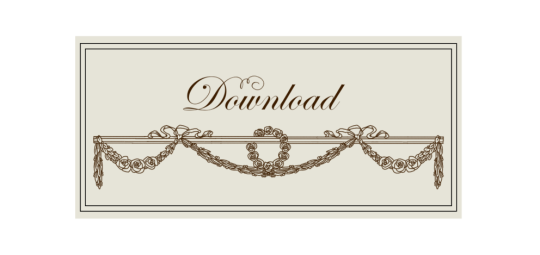
Drive
(Sims3pack | Package)
(Useful tags below)
@joojconverts @ts3history @ts3historicalccfinds @deniisu-sims @katsujiiccfinds @gifappels-stuff
-------------------------------------------------------
#the sims 3#ts3#s3cc#sims 3#sims 3 cc#sims 3 download#sims 3 decor#edwardian#rococo#baroque#renaissance#buckingham#buckingham palace#royal collection trust#wall decor
126 notes
·
View notes
Photo
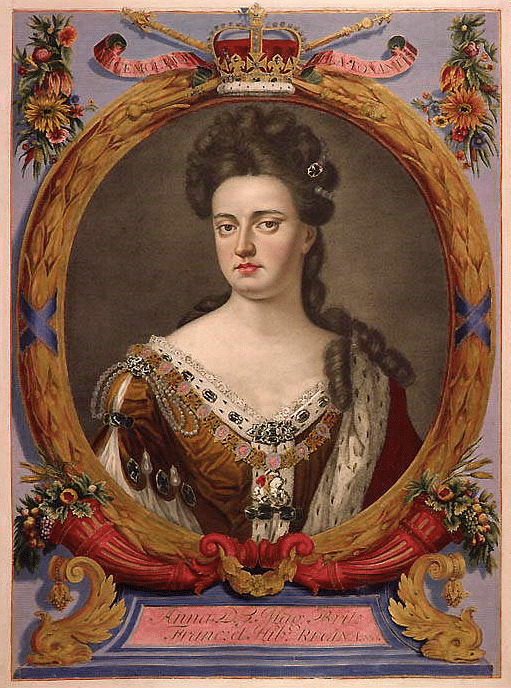
Anne, Queen of Great Britain
Anne reigned as Queen of England, Scotland, and Ireland from 1702 and then, following the 1707 Act of Union, over a united kingdom as Queen of Great Britain until her death in 1714. The last of the Stuart monarchs, Anne's reign witnessed the Spanish War of Succession which helped Britain establish itself as a major world power.
The Stuart Family
James II of England (r. 1685-1688) took over the throne from his late brother Charles II of England (r. 1660-1685) since the latter had no legitimate heir. James was a Catholic, but part of the deal which allowed him to succeed his Protestant brother in 1685 was that he promise to raise his two daughters as Protestants. James' first wife was Anne Hyde, the daughter of the Earl of Clarendon (m. 1660). The couple had two daughters: Mary (b. 1662) and the younger Anne, born on 6 February 1665 at St. James' Palace. Anne Hyde died of illness in 1671, and King James married again, this time to Mary (d. 1718), the daughter of the Duke of Modena. The royal couple had a son, James Francis Edward, who was born on 10 June 1688. There were rumours that the prince was an outsider brought in for convenience, and Anne herself had her suspicions about his legitimacy. The birth relegated Mary and Anne to second and third in line to the throne respectively. For Anne, in particular, the improbable likelihood of her becoming the monarch meant that she did not receive the education or preparation enjoyed by other future sovereigns.
The arrival of a new heir to the throne, who would surely be brought up a Catholic like both his parents, coupled with the king's pro-Catholic policies and authoritarian manner seriously worried many in Parliament. In order to maintain the integrity of Parliament and the achievements of the English Reformation and the primacy of Protestantism in England, several nobles now looked abroad for an alternative king. The obvious choice was William, Prince of Orange. The Dutchman was a Protestant and, in command of a powerful navy, he would be a very useful ally. Further, William was closely connected to the British royal family. William was, through his mother, the grandson of Charles I of England (r. 1625-1649), and he had married James II's daughter Mary in 1677. William was keen to have England's navy, professional army, and resources to aid him in his ongoing conflict with Louis XIV of France (r. 1643-1715).
As it turned out, William's invasion of England was remarkably tranquil, and King James, seeing desertions left, right, and centre – including by his daughter Anne – took the prudent action of escaping to France. This was the Glorious Revolution of 1688. The Prince of Orange became William III of England and his wife Mary II of England (r. 1689-1694). The two ruled jointly until Mary died of smallpox in December 1694. Anne had an uneasy relationship with William whom she described in letters with derogatory terms such as "the Dutch monster" (Cannon, 308). Largely, the royal in-laws kept their relationship distant and formal.
Continue reading...
38 notes
·
View notes
Text

17th September 1745, Prince Charles Edward Stuart declared his father, James Francis Edward Stuart, to be the rightful King of Scotland.
Just a wee follow on from recent posts regarding Charlie's stay in Edinburgh.........
The Prince remained in Edinburgh until the end of October before moving south to begin his ill-fated invasion of England.
An interesting anecdote survives from this visit. The Prince’s band of Highland followers “....with their bagpipes and plaids, rusty rapiers, matchlocks and firelocks.....” had camped on a nearby field of nearly ripe pease (peas). The tenant farmer, David Wright, called at Grays Mill and demanded compensation for his ruined crop. The Prince offered a promissory note in the name of the ‘Prince Regent’ (which would have been his Royal title when the Stuart’s regained the throne), but this was not acceptable to the farmer as it relied upon the Stuart's regaining the throne. The name of the ‘Duke of Perth’ was then offered by an amused Prince as being a more credit worthy guarantor, which was accepted.
It was not until around 1835 that my Great Great Grandfather Matthew Cochrane took over the lease of Grays Mill with his son in law William Henderson becoming Mill Master at the adjoining grain mill. It was on this farm that my Grandfather learnt his farming skills under his own Grandfather, then upon the latter's death in 1870 took over the lease himself at age 19 before emigrating to New Zealand in 1879. I have visited Graysmill three times but sadly all that is evident are industrial buildings, warehouses and car parks. The only points of reference now are the Water of Leith Lodge no 1267 at 26 Inglis Green Road, the railway viaduct, and the aqueduct carrying the Union Canal, all visible in the 1933 aerial photo shown above. Gray's Mill Farmhouse will be one historic building that will unfortunately not carry the roundel
"Prince Charles Edward Stuart Slept Here, 16-17th September 1745"
http://the-lothians.blogspot.co.uk/.../bonnie-prince...
20 notes
·
View notes
Text
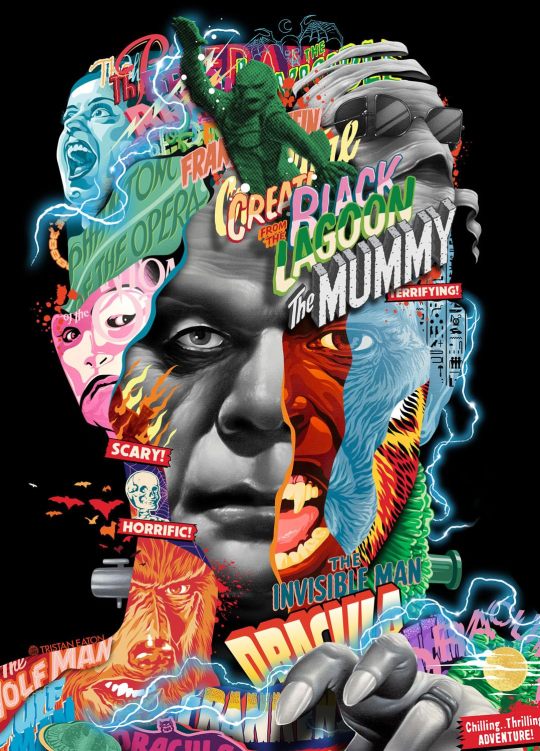
The Universal Classic Monsters Collection will be released on 4K Ultra HD (with Digital) in digibook packaging on October 3 via Universal. Designed by Tristan Eaton, the eight-disc set is limited to 5,500.
It includes 1931's Dracula, 1931’s Frankenstein, 1932’s The Mummy, 1933’s The Invisible Man, 1935’s The Bride of Frankenstein, 1941’s The Wolf Man, 1943’s Phantom of the Opera, and 1954’s Creature from the Black Lagoon.
All eight films are presented in 4K with HDR10. The Spanish version of Dracula is also included. Special features are listed below, where you can also see more of the packaging.
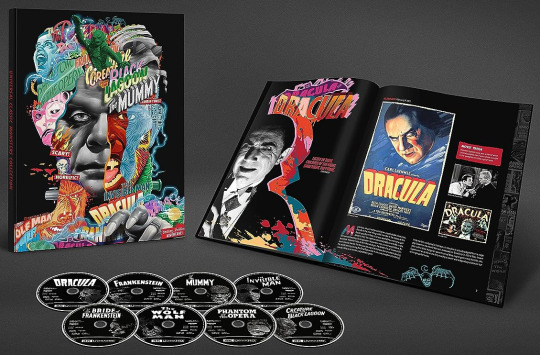
Dracula is directed by Tod Browning (Freaks) and written by Garrett Fort (Frankenstein), based on Bram Stoker’s 1897 novel. Bela Lugosi, David Manners, Helen Chandler, Dwight Frye, and Edward Van Sloan star.
Dracula special features:
Alternate score version by Philip Glass
Dracula (1931) Spanish version directed by George Melford
The Road to Dracula
Lugosi: The Dark Prince
Dracula: The Restoration
Dracula Archives
Monster Tracks
Trailer gallery
Transylvanian vampire Count Dracula bends a naive real estate agent to his will, then takes up residence at a London estate where he sleeps in his coffin by day and searches for potential victims by night.
Frankenstein is directed by James Whale (The Indivisible Man) and written by Garrett Fort (Dracula) and Francis Edward Faragoh (Little Caesar), based on Mary Shelley’s 1818 novel. Colin Clive, Mae Clarke, John Boles, and Boris Karloff star.
Frankenstein special features:
Audio commentary by film historian Rudy Behlmer
Audio commentary by historian Sir Christopher Frayling
The Frankenstein Files: How Hollywood Made A Monster
Karloff: The Gentle Monster
Universal Horror
Frankenstein Archives
Boo!: A Short Film
100 Years of Universal: Restoring the Classics
Monster Tracks
Trailer gallery
Dr. Frankenstein dares to tamper with life and death by creating a human monster out of lifeless body parts.
The Mummy is directed by Karl Freund (Dracula) and written by John L. Balderston (Dracula). Boris Karloff, Zita Johann, David Manners, Edward Van Sloan, and Arthur Byron star.
The Mummy special features:
Audio commentary by film historian Paul M. Jensen
Audio commentary by Rick Baker, Scott Essman, Steve Haberman, Bob Burns, and Brent Armstrong
Mummy Dearest: A Horror Tradition Unearthed
He Who Made Monsters: The Life and Art of Jack Pierce
Unraveling the Legacy of The Mummy
The Mummy Archives
100 Years of Universal: The Carl Laemmle Era
Trailer gallery
An Egyptian mummy searches Cairo for the girl he believes is his long-lost princess.
The Invisible Man is directed by James Whale (Frankenstein) and written by R.C. Sherriff (Goodbye, Mr. Chips), based on H.G. Wells’ 1897 novel. Gloria Stuart, Claude Rains, William Harrigan, Dudley Digges, and Una O'Connor star.
The Invisible Man special features:
Audio commentary by film historian Rudy Behlmer
Now You See Him: The Invisible Man Revealed
Production Photographs
100 Years of Universal: Unforgettable Characters
Trailer gallery
A scientist finds a way of becoming invisible, but in doing so, he becomes murderously insane.
The Bride of Frankenstein is directed by James Whale (Frankenstein) and written by William Hurlbut. Boris Karloff, Colin Clive, Valerie Hobson, and Elsa Lanchester star.
The Bride of Frankenstein special features:
Audio commentary by film historian Scott MacQueen
She’s Alive! Creating The Bride of Frankenstein
The Bride Of Frankenstein Archive
100 Years of Universal: Restoring the Classics
Trailer gallery
Dr. Frankenstein, goaded by an even madder scientist, builds his monster a mate.
The Wolf Man is directed by George Waggner (Operation Pacific) and written by Curt Siodmak (I Walked with a Zombie). Claude Rains, Warren William, Ralph Bellamy, Patric Knowles, Bela Lugosi, and Lon Chaney Jr. star.
The Wolf Man special features:
Audio commentary by film historian Tom Weaver
Monster by Moonlight
The Wolf Man: From Ancient Curse to Modern Myth
Pure in Heart: The Life and Legacy of Lon Chaney Jr.
He Who Made Monsters: The Life and Art of Jack Pierce
The Wolf Man Archives
100 Years of Universal: The Lot
Trailer gallery
Larry Talbot returns to his father's castle in Wales and meets a beautiful woman. One fateful night, Talbot escorts her to a local carnival where they meet a mysterious gypsy fortune teller.
Phantom of the Opera is directed by Arthur Lubin and written by Eric Taylor (The Ghost of Frankenstein) and Samuel Hoffenstein (Dr. Jekyll and Mr. Hyde). Claude Rains, Nelson Eddy, Susanna Foster, and Edgar Barrier star.
Phantom of the Opera special features:
Audio commentary by film historian Scott MacQueen
The Opera Ghost: A Phantom Unmasked
Production Photographs
100 Years of Universal: The Lot
Theatrical trailer
An acid-scarred composer rises from the Paris sewers to boost his favorite opera understudy’s career.
Creature from the Black Lagoon is directed by Jack Arnold (The Incredible Shrinking Man) and written by Harry Essex and Arthur A. Ross. Richard Carlson, Julia Adams, Richard Denning, Antonio Moreno, Nestor Paiva, and Whit Bissell star.
Creature from the Black Lagoon special features:
Audio commentary by film historian Tom Weaver
Back to the Black Lagoon
Production Photographs
100 Years of Universal: The Lot
Trailer gallery
A group of scientists try to capture a prehistoric creature luring in the depths of the Amazonian jungle and bring it back to civilization for study.
Pre-order Universal Classic Monsters Collection.
#universal monsters#dracula#frankenstein#the mummy#creature from the black lagoon#the wolf man#bride of frankenstein#phantom of the opera#the invisible man#horror#classic horror#dvd#gift#the bride of frankenstein#tristan eaton#wolf man
101 notes
·
View notes
Text
ok not to be a fucking British history nerd on main but yall
Henry's royal house is 'Hanover-Stuart' - implying he comes from the House of Hanover
but the last Hanover monarch was Queen Victoria. Her children inherited their father (her cousin's) house- Saxe-Coburg and Gotha. After that the British line of Hanover effectively ended
So the persistence of the name then implies that in the Red White and Royal Blue universe, Queen Victoria - who we know exists as a Queen in universe because of the food fight joke- was either succeed by a much more distantly related Hanover- implying her children either didn't exist or were somehow removed from the line of succession (hello new fictional civil war of 1901), OR it implies that Queen Victoria somehow, in 1840- changed the entire system of patralineage into a matralineage so her children would inherit the Hanover title. This would then in turn imply that the female line would have to be acknowledged as the stronger claimant to the throne meaning the heir to Victoria's throne would NOT have been Edward VII, but instead Victoria's first born- a daughter also called Victoria (hereafter referred to as V2 for clarity).
But in real life V2 went on to become the empress of Germany and the mother of the last German Kaiser - you know the one who was CREEPILY almost incestuously obsessed with his mothers hands and who ALSO LARGELY CAUSED WW1 BY MAKING 1910s GERMANY AN EXTREMELY AGGRESSIVE MILITARY POWER TO RESOLVE IS DADDY ISSUES?! But if in RW&RB V2 never became the German Empress, she never would have had Wilhelm II, and would instead have married a man of lower station and went on to continue the Hanover line in England, meaning there would be no Willhelm II - whos infamously erratic and hostile foreign policy led to the destabilization of Germany's position in Europe and was likely the main contributor to the reactionary foreign policies of other European powers that then caused the beginning of the conflict that became WW1.
SO IN RW&RB, IS THERE NO WW1?!
and that's not even getting into the Stuart of it all - a Royal line that ended IN 1714 AND WAS THE WHOLE SOURCE OF THE JACOBITE UPRISINGS. like if the Stuart line continued in the name, that implies that instead of it dying out with Anne, and the distant relatives of James II then forming the Jacobites to reclaim the throne, they somehow wove them back into the family tree?!
So were there no Jacobite Uprisings in RW&RB?
Is that why Henry is able to be styled as Prince of Wales, despite him not being the Crown Prince- because in this universe with the Stuarts still part of the royal family the Crown Prince's seat now becomes Prince of Scotland, also implying that Scotland has also now become a principality rather than a kingdom?! And how did the Stuart line stay in? Did Victoria NOT marry Albert, but instead marry a Stuart? But no, because the last Stuart was literally a fatherless priest who died 20 years before she was born, and the V&A still exists in universe, so Victoria still definitely married Albert. So did V2 get married off to some distant Stuart (most likely Francis V of Modena)? IS SCOTLAND A PRINCIPALITY NOW?! WHO CAUSED WW1?! WAS IT BECAUSE OF THE FICTIONAL BRITISH CIVIL WAR OF 1901?!
WHY HAVE YOU DONE THIS AMAZON. YOUR SILLY LITTLE CHANGE TO AVOID PISSING OF PONCEY KING CHAZ IS GOING TO EAT HOLES IN MY BRAIN
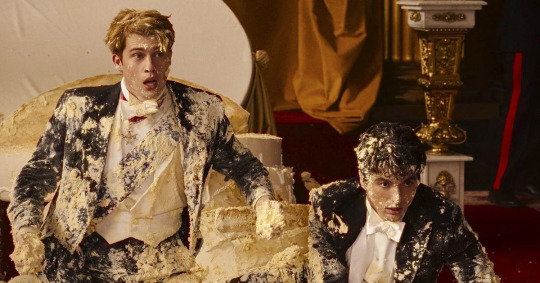
pictured here: my mental state rn
#Its 4:30am and i have brain rot about this movie#and henrys last name has been BUGGING me as a plot point#i know there is no way they thought it through this much#red white and royal blue#henry fox mountchristen windsor#henry hanover stuart fox
67 notes
·
View notes
Text

James Edward (1688-1766)
Artist: Nicolas de Largillière (French, 1656-1746)
Date: 1695
Medium: Oil on Canvas
Description
James Francis Edward Stuart. Known as the Old Pretender. Claimant to the British throne at about age 7, with his sister, Princess Louisa Maria Theresa Stuart.
#portrait#james francis edward#louisa maria theresa stuart#prince#princess#house of stuart#nicolas de largilliere#french painter#17th century painter#european art#oil on canvas#boy#girl#english royalty#landscape#garden#trees#garden pot#plant#costume#dog
2 notes
·
View notes
Text


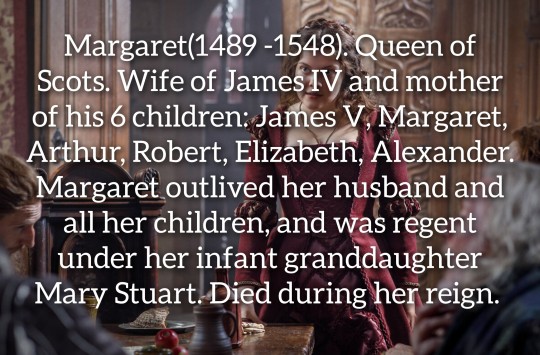
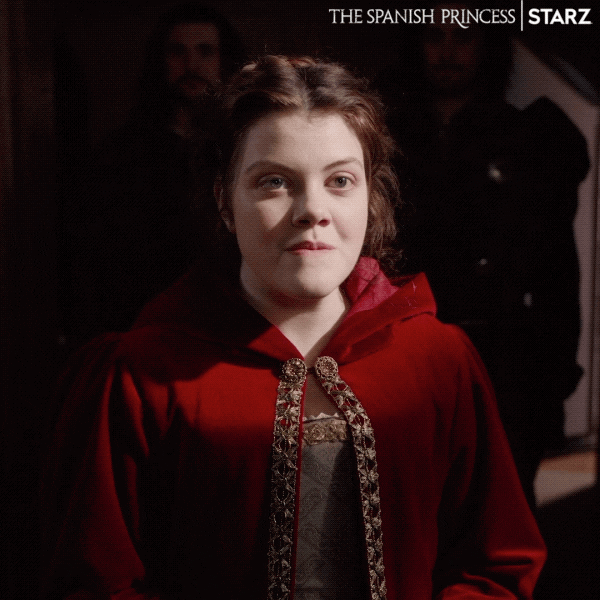
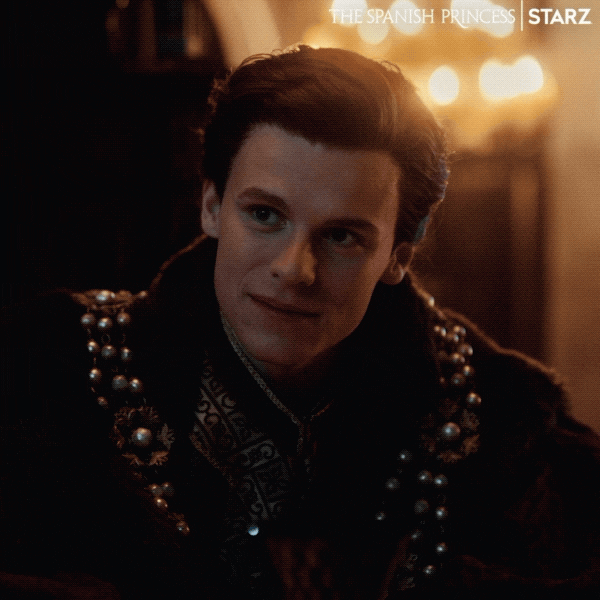



AU House of Tudors: Children Henry VII and Elizabeth of York
Arthur(1486 - 1540). King of England. Husband Catherine of Aragon and father of 8 children: Edward VI, Elizabeth, Henry, George, Isabella, Margaret, Cecilia, John. The married life of Catherine and Arthur was a happy one. Prince Arthur from childhood enjoyed great popularity in his kingdom. He was loved not only by representatives of the nobility, but also by ordinary people. He was considered the most educated prince of his time. He was the pride of his parents. The period of his reign went down in history as the Golden Age of England.
Margaret (1489 -1548). Queen of Scots. Wife of James IV and mother his 6 children: James V, Margaret, Arthur, Robert, Elizabeth, Alexander. Margaret outlived her husband and all her children, and was regent under her infant granddaughter Mary Stuart. Died during her reign.
Henry(1491 - 1547). Duke of York. Husband of Eleanor of Austria. Father of 5 children: Elizabeth, Henry, Joanna, Charles and Philip. Their marriage was an ordinary political union and although the couple had no affection for each other, there was a friendly relationship between them.
Elizabeth(1492 - 1552). Queen of France. Wife of Francis I. Between Francis and Elizabeth were warm relations. They had 10 children: Louise, Francis II, Charles, Henry, Elizabeth, Margaret, Antoine, Magdalena, Gaspard, Louis. Elizabeth influenced her husband's policies for the benefit of her country, which the king's mother disliked. Elizabeth and her mother-in-law constantly competed for Francis' influence and attention.
AU: Дети Генриха VII и Елизаветы Йоркской.
Артур(1486 - 1540). Король Англии. Муж Екатерины Арагонской и отец 8 детей: Эдуард VI, Елизавета, Генрих, Джордж, Изабелла, Маргарита, Сесилия, Джон. Супружеская жизнь Екатерины и Артура была счастливой. Принц Артур с детства пользовался большой пополярностью в своём королевстве. Его любили не только представители дворянского сословия, но и обычные люди. Считался самым образованным принцем своего времени. Был гордостью своих родителей. Период его правления вошёл в историю как Золотой Век Англии.
Маргарита(1489 -1548). Королева Шотландии. Жена Якова IV и мать его 6 детей: Яков V, Маргарита, Артур, Роберт, Елизавета, Александр. Маргарита пережила мужа и всех своих детей, была регентом при своей малолетней внучке Марии Стюарт. Умерла при её правлении.
Генрих(1491 - 1547). Герцог Йоркский. Муж Элеоноры Австрийской. Отец 5 детей: Елизавета, Генрих, Джоана, Чарльз и Филипп. Их брак был обычным политическим союзом и хотя супруги не питали к друг другу нежных чувств, но между ними были дружеские отношения.
Елизавета(1492 - 1552). Королева Франции. Жена Франциска I. Между Франциском и Елизаветой были тёплые отношения. У них родилось 10 детей: Луиза, Франциск II, Шарль, Генрих, Елизавета, Маргарита, Антуан, Магдалена, Гаспар, Людовик. Елизавета влияла на политику своего мужа на пользу своей стране, что не нравилось матери короля. Елизавета и её свекровь постоянно соперничали за влияние и внимание Франциска.
Part 1.
#history#history au#royal family#royalty#isabella#history of england#british royal family#british royalty#the tudors#the white princess#the white queen#the spanish princess#henryviii#catherine of aragon#mary tudor#au#reign#england#henry vii of england#elizabeth of york#house of york#house of tudor#english royalty#Royal#Royals#Roy
16 notes
·
View notes
Text
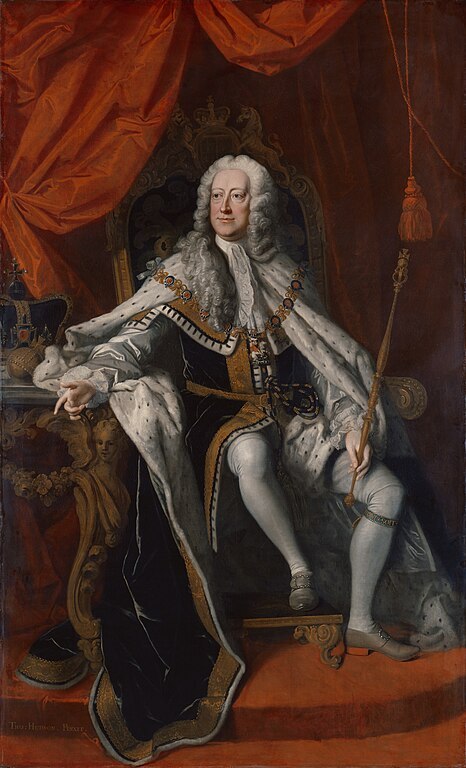
Thomas Hudson - Portrait of king George II of UK - 1744
oil on canvas, height: 218.8 cm (86.1 in) Edit this at Wikidata; width: 146.7 cm (57.7 in)
National Portrait Gallery, London, UK
George II (George Augustus; German: Georg August; 30 October / 9 November 1683[a] – 25 October 1760) was King of Great Britain and Ireland, Duke of Brunswick-Lüneburg (Hanover) and a prince-elector of the Holy Roman Empire from 11 June 1727 (O.S.) until his death in 1760.
Born and brought up in northern Germany, George is the most recent British monarch born outside Great Britain. The Act of Settlement 1701 and the Acts of Union 1707 positioned his grandmother Sophia of Hanover and her Protestant descendants to inherit the British throne. In 1705, George married Caroline of Ansbach, with whom he had eight children. After the deaths of George's grandmother and Anne, Queen of Great Britain, in 1714, George's father, the Elector of Hanover, ascended the British throne as George I. In the first years of his father's reign as king, Prince George was associated with opposition politicians until they rejoined the governing party in 1720.
As king from 1727, George exercised little control over British domestic policy, which was largely controlled by the Parliament of Great Britain. As elector he spent twelve summers in Hanover, where he had more direct control over government policy. He had a difficult relationship with his eldest son, Frederick, who supported the parliamentary opposition. During the War of the Austrian Succession, George participated at the Battle of Dettingen in 1743, and thus became the most recent British monarch to lead an army in battle. In 1745 supporters of the Catholic claimant to the British throne, James Francis Edward Stuart ("The Old Pretender"), led by James's son Charles Edward Stuart ("The Young Pretender" or "Bonnie Prince Charlie"), attempted and failed to depose George in the last of the Jacobite rebellions. Frederick died suddenly in 1751, nine years before his father; George was succeeded by Frederick's eldest son, George III.
For two centuries after George II's death, history tended to view him with disdain, concentrating on his mistresses, short temper, and boorishness. Since then, reassessment of his legacy has led scholars to conclude that he exercised more influence in foreign policy and military appointments than previously thought.
Thomas Hudson (1701 – 1779) was an English painter, almost exclusively of portraits.
7 notes
·
View notes
Text
In case any of you need some inspiration for later this week. Why not try a Stuart pickup line rather than giving in to the consumerist hellscape of chocolates and flowers? You'll surely get bonus points for originality! 😉
Comic Sans Valentines: Stuart Edition
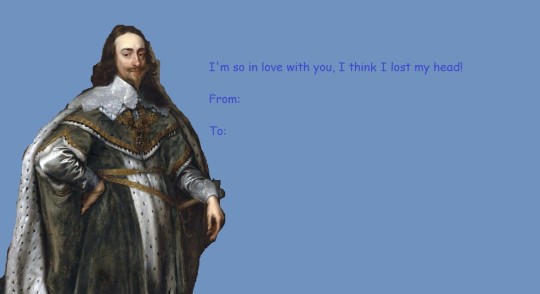
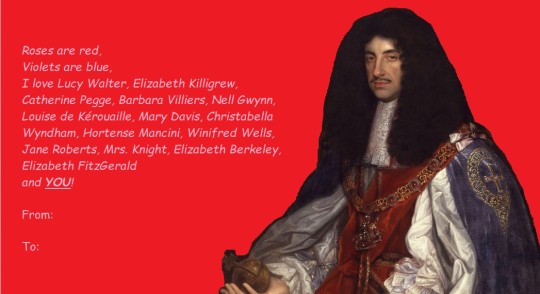

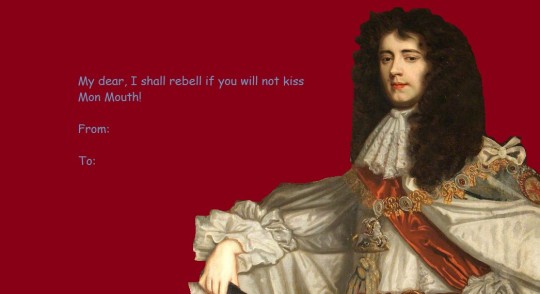
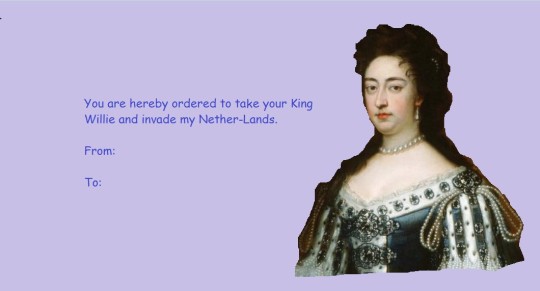
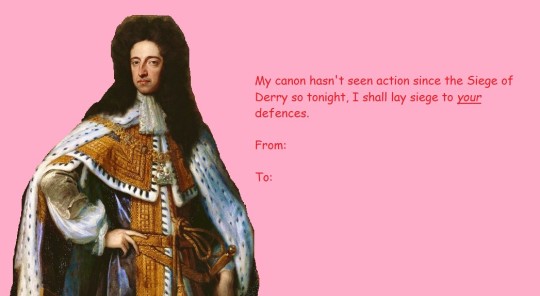

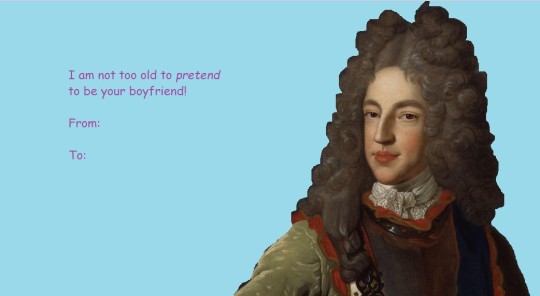
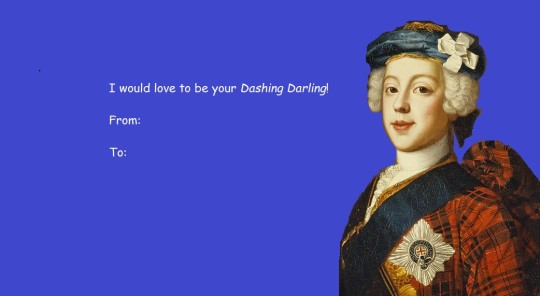
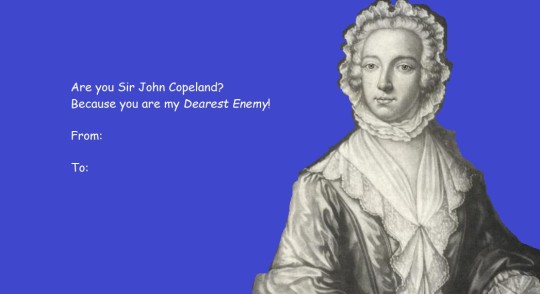
Imagine you have travelled back through time, and find yourself in the middle of some splendid court festivities... The gentlemen wear their finest embroidered suits, the ladies their most choice jewels and you marvel at the spectacle you are allowed to partake in. As you retire to a balcony to take some fresh air with your glass of syllabub, you feel a hand brushing your shoulder. As you turn, a calm, albeit laboured voice breathes into your ear: "My cannon hasn't seen action since the Siege of Derry." *wink* You recoil and screaming-- and wake up sitting upright in your bed.
Upon suggestion from @vankeppel, have some terrible pick-up lines from terrible dead people!
There are two options for Bonnie Prince Charlie; a fairly obvious one alluding to Mo Ghile Mear, and a second one for fans of the 1925 musical Dearest Enemy (...are there any?) who'll know there was more than one 18th century "Betsy Burke" who had a few (tender) brushes with gentlemen in red coats.
#self reblog#comic sans valentines#stuarts#house of stuart#charles i#charles ii#james ii#james scott duke of monmouth#mary ii#william iii#anne#queen anne#james francis edward stuart#the old pretender#charles edward stuart#bonnie prince charlie#history#history humour#history memes#17th century#18th century#dearest enemy#utter nonsense#british history
142 notes
·
View notes
Text
This first edit of old classic passing Tuesday Mary Jesus Joseph Angels in heaven Princess Pocahontas, Lallie Charles Cowell Portrait, Lou Conter, Amber Rene Hagerman, Opal Jennings, JonBenèt Ramsey, Kelly Ann Fleming, Judith and Maria Barsi, Heather Michele O'Rourke, Lucille Ricksen, Judy Garland and Terry, Dominique and Dominick Dunne, Samantha Reed Smith, Pal, Bessie Barker, Darla Jean Hood, Mona Lisa, Mary G Stinson Smith, Grigori Rasputin, Julia Ann Beauchemin Stinson, COL Thomas Nesbit Stinson, Lydia Ruth Talbot Theobald, Arthur James Talbot, Alton Elbren Theobald, George Eli Talbot Sr., Benjamin Grant “Cotton” Theobald, Crystal Theobald Whitehead, Charles Arthur Theobald, Thomas Benjamin Talbot, Margaret Alice Wiggill Talbot, Eli Wiggill, Rosanna Maria Wiggill Talbot, Isaac Wiggill, Ann Brown Hammer Wiggill, Frances Amelia Wiggill Lowe, Ailsa Georgina Booth-Jones, Edward Booth-Jones, John Percival Booth-Jones, Millichamletton Percival Booth-Jones, Jeremiah Francis “Jerry” Wiggill, Eli Francis Wiggill, Priscilla Jane Talbot Wiggill, Victoria Adelaide Wiggill McLean, John Richard Wiggill, Lavina Ruth Wiggill Ellison, Sarah Good, Salina Talbot Dutson, Charles Henry Talbot, Charles Stuart Talbot, Roseanna Maria Talbot Anderson, Ellen Graham Anderson, 1SGT William Alexander Anderson, Mary Louisa Blair Anderson, Ruth Floyd Anderson McCulloch, Anna Aylett Anderson McNulty, William Dandridge Alexander Anderson, William Dandridge Alexander “Alex” Anderson, Judith Nicoll Anderson, Henry Wayne Blair, Col William Barrett Blair, Mylinda Elizabeth “Mindy” Baker,Michael L. Baker, Carla Jean Eves Baker,Sandra Jane Burch, Patti Jo Baker, Jessie Benton Stinson, Jack Chesbro, Mabel A Shuttleworth Chesbro, Prince Sigismund of Prussia, Ruth Naomi Steward, Truman Cox Steward, Alice Christine Steward Wear, Charles Corwin Steward, Helga Susanne Goebbels, Hildegard Traudel “Hilde” Goebbels, Helmut Christian Goebbels, Holdine Kathrin “Holde” Goebbels, Hedwig Johanna “Hedda” Goebbels, Heidrun Elisabeth “Heide” Goebbels, Harald Quandt, and so much more I'll add Gracie Perry Watson in the second row of edits
2 notes
·
View notes
Text
Bonnie Prince Charlie: Recreation shows the face of Jacobites rising
He is one of Scotland’s most famous historical figures but more than 200 years after he died, Bonnie Prince Charlie has been given a new lease of life by experts at the University of Dundee.
A team at the University’s Centre for Anatomy and Human Identification (CAHID) has recreated the face of the Prince as he would have looked at the time of the Jacobite rising, his unsuccessful attempt to restore his father, James Francis Edward Stuart, to the British throne.
Aged just 24 at this time, this new recreation has been produced using death masks of the Prince, which have been painstakingly photographed and mapped by Dundee researchers. Subsequently, 3D models were produced with state-of-the-art software allowing experts to “de-age” the Prince to create a representation of him from the period he is best remembered.
“I have looked at previous reconstructions of historical figures and was interested as to how these could be done differently,” said Barbora Veselá, a Masters student who initiated the project and whose work will feature as part of the University of Dundee’s annual Masters Show, which opens to the public on Saturday 19 August.
“I wanted to create an image of what he would have looked like during the Jacobite rising. There are death masks of Bonnie Prince Charlie that are accessible, while some are in private collections. We also know that he suffered a stroke before he died, so that made the process of age regression even more interesting to me.”
Born to the exiled Stuart King James III of England and Ireland and VIII of Scotland, Prince Charles Edward Stuart sought to regain the Great British throne for his father in the Jacobite rising of 1745.
Despite some initial successes on the battlefield, his army was defeated by government forces at the Battle of Culloden, near Inverness, in April 1746 and he spent the next five months as a hunted man before eventually fleeing to France. He spent the rest of his life on the continent and died in Palazzo Muti, Rome, at the age of 67.
Since his death, Bonnie Prince Charlie has continued to inspire writers and historians and has come to the attention of a new generation of admirers through depictions in modern media, including television shows such as Outlander.
Following his death, a cast of the Prince’s face was taken, as was common for notable figures at the time. The Dundee team examined copies of two these masks - located at Highlife Highland's Inverness Museum and Art Gallery, and The Hunterian, University of Glasgow, creating a composite over several months. Barbora took photographs from all around the masks and then utilised photogrammetry software to establish a 3D model. In total, she estimates that almost 500 images have been taken of both masks as part of the recreation process.
“It has been a pleasure to work with these artefacts,” she continued.
“The access I have been given has been incredible. There are moments, when you are working with the masks, that it suddenly strikes you that this was once a living person.
“We don’t tend to think about the age of people when we study history, but Prince Charlie was just 24 years-old when he landed in Scotland and to visualise how young he was at this pivotal moment in history is fascinating.
“He has some interesting features. Beauty is a very subjective thing, but Bonnie Prince Charlie does have distinctive features, such as his nose and his eyes, that encourage you to study him.
“Hopefully this recreation encourages people to think about him as a person, instead of just a legend. At the same time, it is important not to romanticise him or the era of history. There are many accounts of him but having a face to look at helps us to view him as a human and not just a name from history.”
CAHID’s Dr Tobias Houlton, who specialises in craniofacial identification and forensic imaging, said that this new image would bring new interest in the life of the famous Prince.
“This has been a hugely exciting project,” he said.
“Through many hours of hard work, Barbora has given us an exciting new insight into European history. This recreation will undoubtedly fascinate the public and the added dynamic of using artificial age-regression to bring him back to the Jacobite era, when he was most famous, showcases the range of expertise we have here at the University of Dundee.”
The recreation will feature as part of the University of Dundee’s annual Masters Show. Visitors are once again invited to the studios and exhibition spaces at Duncan of Jordanstone College of Art & Design to explore a multitude of works that include fine art, comics, and animation, to items designed with health, science, innovation and functionality in mind.
The exhibition is open to the public from Saturday 19 August to Sunday 27 August.
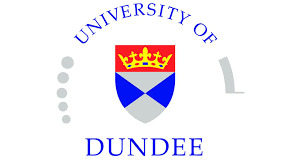
Published on 18 August 2023
#BonniePrinceCharlie #BarboraVeselá #Prince #UniversityofDundee #CAHID #Scotland #3D #Jacobite #Culloden #PalazzoMuti #Rome #history #Europe #MastersShow #recreation #STV
3 notes
·
View notes